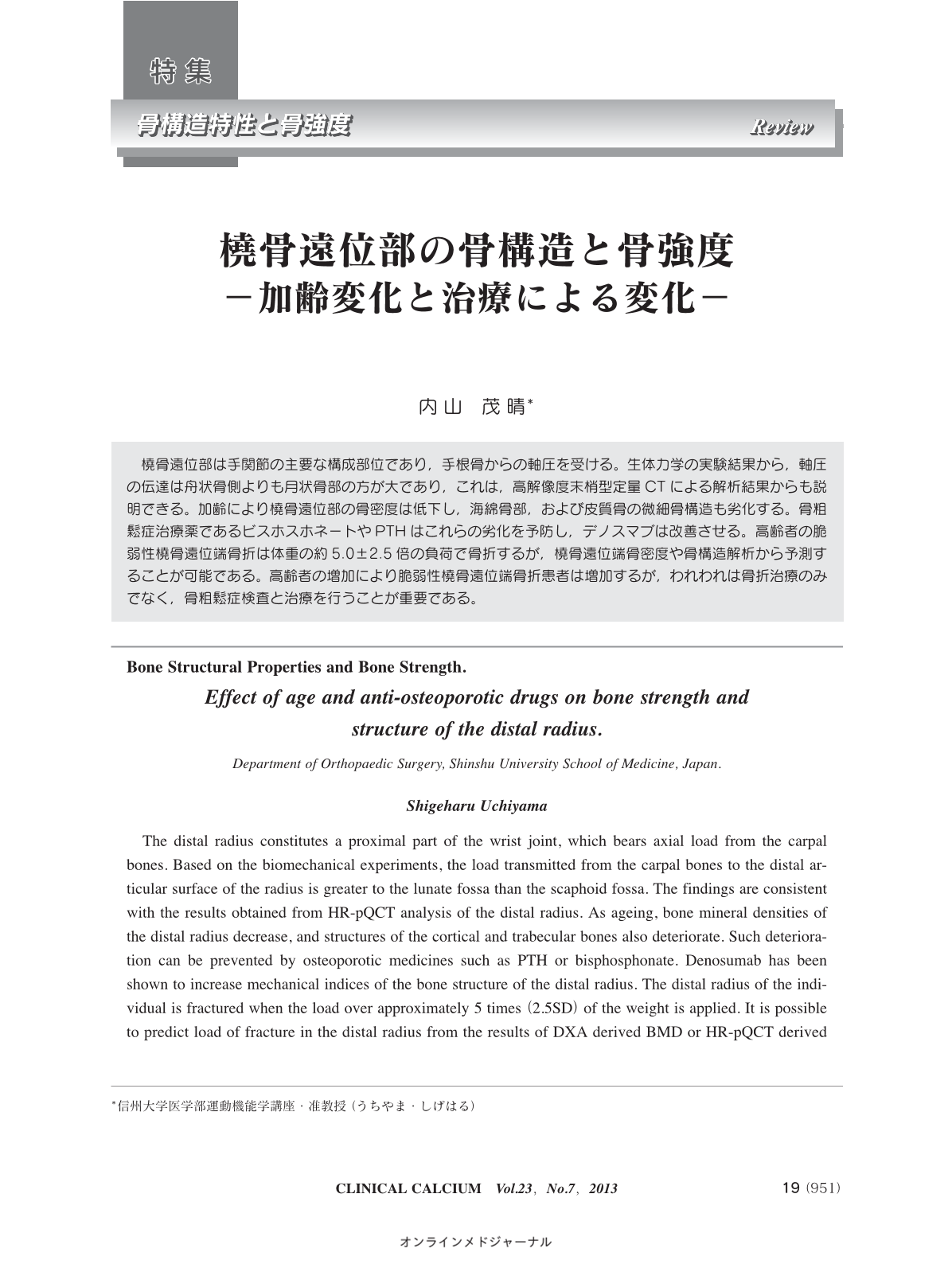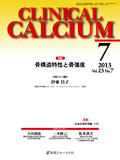Japanese
English
- 有料閲覧
- Abstract 文献概要
- 1ページ目 Look Inside
- 参考文献 Reference
橈骨遠位部は手関節の主要な構成部位であり,手根骨からの軸圧を受ける。生体力学の実験結果から,軸圧の伝達は舟状骨側よりも月状骨部の方が大であり,これは,高解像度末梢型定量CTによる解析結果からも説明できる。加齢により橈骨遠位部の骨密度は低下し,海綿骨部,および皮質骨の微細骨構造も劣化する。骨粗鬆症治療薬であるビスホスホネートやPTHはこれらの劣化を予防し,デノスマブは改善させる。高齢者の脆弱性橈骨遠位端骨折は体重の約5.0±2.5倍の負荷で骨折するが,橈骨遠位端骨密度や骨構造解析から予測することが可能である。高齢者の増加により脆弱性橈骨遠位端骨折患者は増加するが,われわれは骨折治療のみでなく,骨粗鬆症検査と治療を行うことが重要である。
The distal radius constitutes a proximal part of the wrist joint, which bears axial load from the carpal bones. Based on the biomechanical experiments, the load transmitted from the carpal bones to the distal articular surface of the radius is greater to the lunate fossa than the scaphoid fossa. The findings are consistent with the results obtained from HR-pQCT analysis of the distal radius. As ageing, bone mineral densities of the distal radius decrease, and structures of the cortical and trabecular bones also deteriorate. Such deterioration can be prevented by osteoporotic medicines such as PTH or bisphosphonate. Denosumab has been shown to increase mechanical indices of the bone structure of the distal radius. The distal radius of the individual is fractured when the load over approximately 5 times(2.5SD)of the weight is applied. It is possible to predict load of fracture in the distal radius from the results of DXA derived BMD or HR-pQCT derived bone parameters. We should not miss the opportunity of treatment for osteoporosis when the patients with fragility distal radius fracture are seen.



